Site of the Margaret Cheney Room - MIT Pierce Building (1898 - 1916)
Introduction
Text-to-speech Audio
In 1883, the demolition of the Women’s Laboratory left MIT without dedicated rest rooms and laboratory space for women students. Concerned by what the lack of suitable facilities for women could mean for the future of women at MIT, Ellen Swallow Richards, MIT’s first female graduate and fierce supporter of higher education for women, immediately when to work. This is the story of how one room and a determined group of local women secured a full and permanent place for female students at MIT.
Now the site of the John Hancock Tower, the Pierce Building was demolished and Stuart Street extended by 1922.
Images
Margaret Cheney Room, Pierce Building, Boston, 1898.

Margaret Cheney Reading Room for women students in Pierce Building, Boylston Street, Boston, Circa 1898-1916
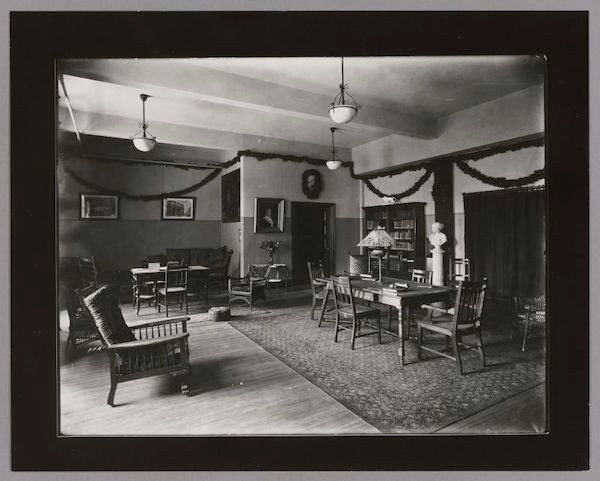
Trinity Place Buildings, including the Pierce Building. MIT Technology Review, 1899, Vol 1.
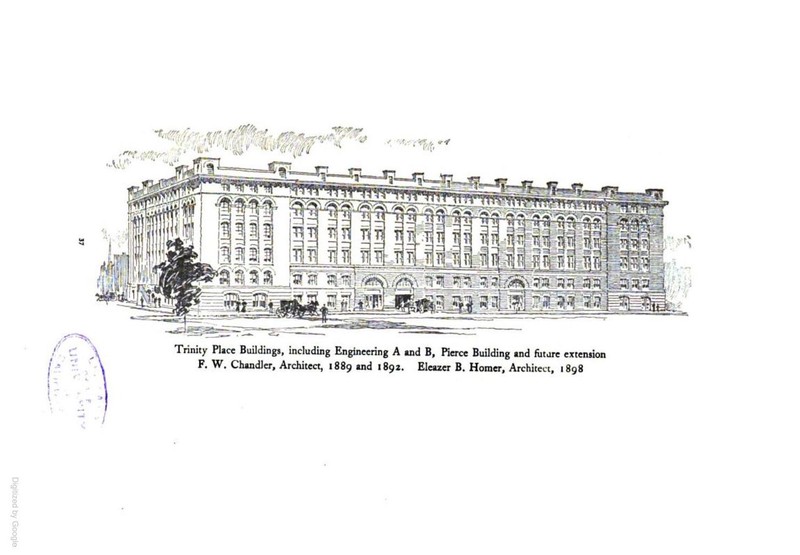
Drawing by Eleazer B. Homer (1885 S.B. Architecture), Pierce Building Floor Plan. Technology Review, Volume 1, Number 1, 1899.
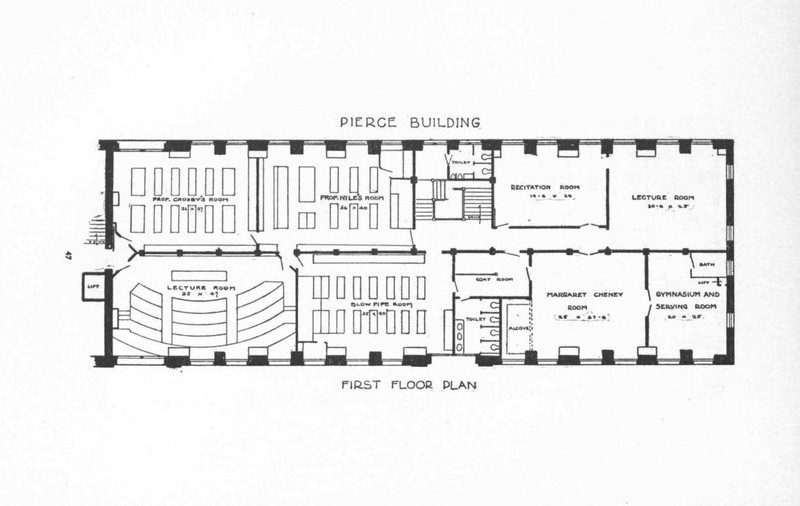
Margaret Cheney Reading Room for women students in Walker Building, Boylston Street, Boston, 1884.
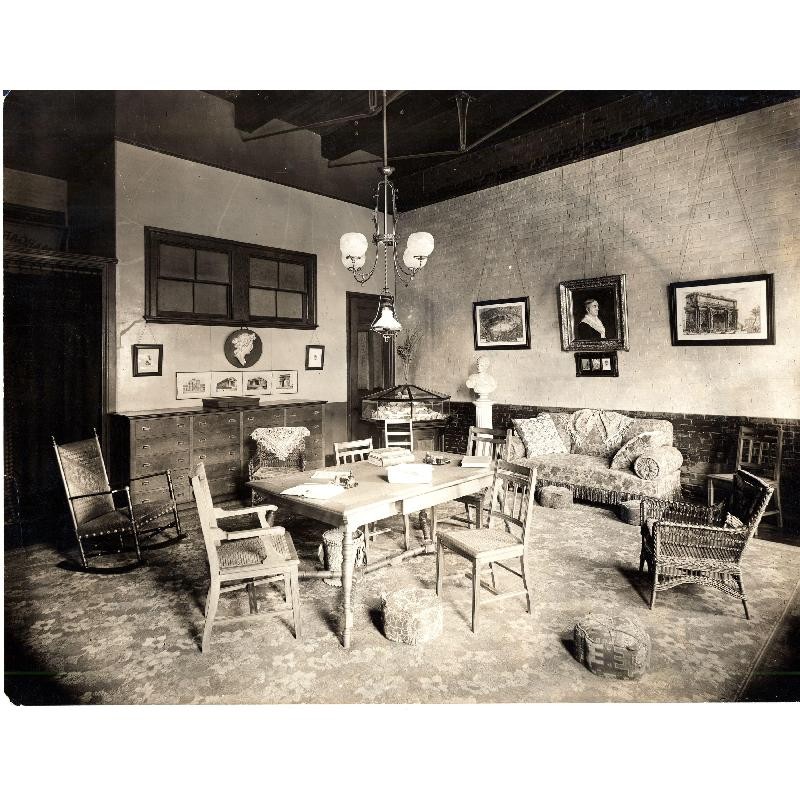
Margaret Cheney Room Library. Walker Building, Boylson St., Circa 1888.
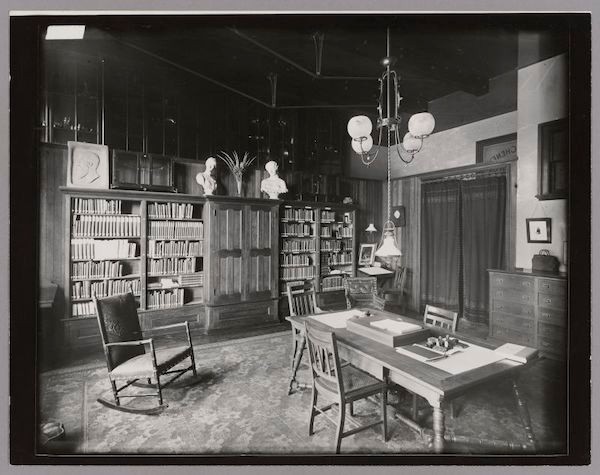
Association of Women Students. Walker Building Boylston St, 1893.
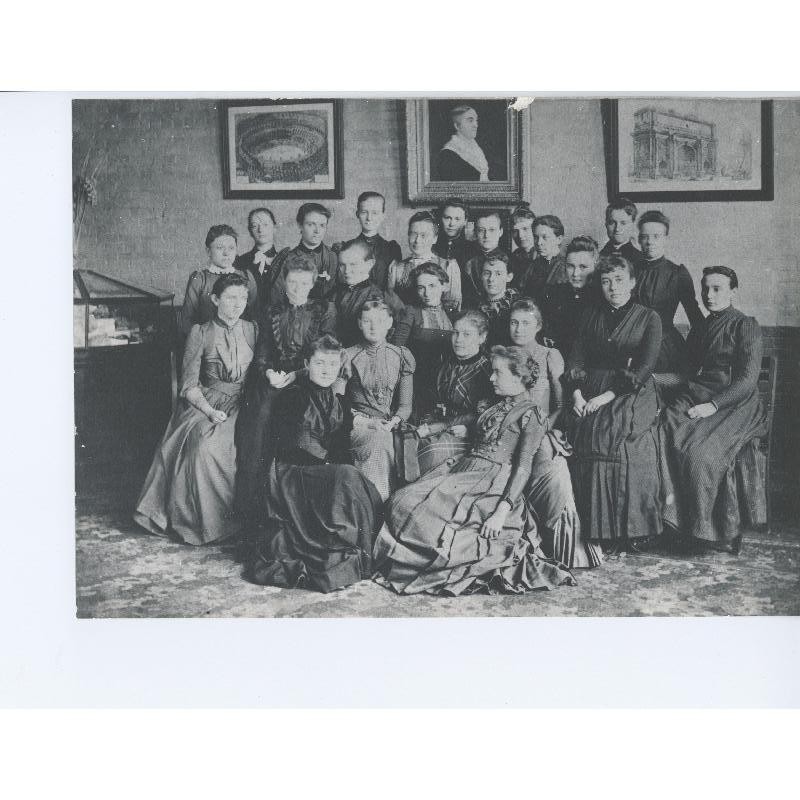
Photograph of a framed painting of Ellen Swallow Richards, painted by Ellen Hale.

Photographs of a framed painting of Margaret Swan Cheney, painted by George Fuller in 1884
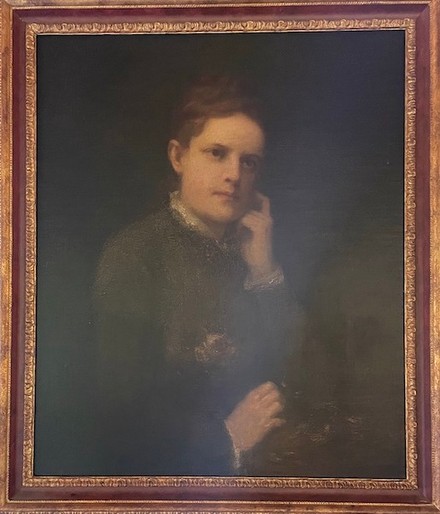
Backstory and Context
Text-to-speech Audio
In 1882, MIT began planning for the new Walker Building on the same site as the Women’s Laboratory, which housed MIT’s only facilities for female students. Although the Walker Building was designed to provide more laboratory space for MIT’s rapidly growing student population, there was no plan to include facilities or laboratory space for women. When the Women’s Laboratory was demolished in 1883, MIT declared that it no longer had the facilities required to accept female students into all departments.
Ellen Swallow Richards (1873 S.B. Chemistry), MIT’s first female graduate and chemistry instructor at the Women’s Laboratory, knew that the lack of facilities for women would be devastating to the future of female students at MIT.
Determined to secure a place for women at MIT, Ellen formed a committee alongside Lucretia Crocker, Abby May, and Florence M. Cushing (Class of 1886) to raise funds for suitable women’s facilities and rest rooms in the new Walker Building. The committee immediately sought support from the Women’s Educational Association in Boston, which, in 1876, had been instrumental in funding the Women’s Laboratory.
In their appeal to the Women’s Education Association, Ellen’s committee explained that MIT had no plans to include facilities for women in the new Walker Building and that without facilities for women, MIT would have a convenient excuse to no longer accept female students. However, in a letter to the Women’s Education Association, the committee explained that hope was not lost: “There is reason to believe that if a sum of money were placed in the hands of the Corporation to defray the expenses of such additional accommodations for women as may be deemed by them suitable, a vote of the Board might be secured which would extend all the advantages of the Institute of Technology to women. If such a vote is taken by the Corporation of the Institute of Technology, we the undersigned pledge ourselves to give or to obtain by the first of June, 1882, for the purpose named, the sums stated."[1]
Ellen’s committee deftly tied their pledged funds to MIT’s guarantee to provide women with a full and permanent place at MIT. With donations from the Women’s Education Association and more than fifty local women, Ellen’s committee raised $8,000, which was donated to MIT for the construction of a dedicated space for women in the Walker Building.[1]
Ellen’s vision was realized in 1884 when the Walker Building opened with facilities dedicated to female students who were now guaranteed a place at MIT. The Women’s Education Association donated additional funds, furniture, books, dishware, and pictures to outfit the women’s room with everything the female students would require.
The room was named the Margaret Cheney Reading Room in memory of a former student at the Women’s Laboratory who worked closely with Ellen between 1876 and 1881. Professor M.D. Ross, who knew Margaret her whole life, proposed her name for the new women’s room, and it was accepted unanimously.[1] In support, Margaret’s family contributed five hundred dollars to the new Cheney Room.
Ellen later wrote that Margaret’s “zeal and her love of her work were of great importance to the setting of a standard in the early days of scientific study by women.”[2] Margaret’s legacy as a well-respected and accomplished scientist and educator embodied the goal of the newly established Cheney Room: to create facilities that would guarantee women a place to study alongside men at the highest levels and become leaders in their chosen fields.
In a paper read at the fiftieth anniversary of the Women’s Education Association in 1921, Susan Minns (Class of 1881) reflected on the significance of the association’s role in establishing the Cheney Room forty years earlier: “we must ever bear in mind that out for the Woman’s Education Association, the Institute of Technology would have been, like Harvard, a sealed book for women.”[3]
Long before most colleges and universities allowed women to study alongside men and earn the same degrees as men, Ellen, the Women’s Education Association, and more than fifty local women secured a place for female students at MIT.[1]
In the 20 years after the Cheney Room opened, women’s enrollment in MIT grew steadily. By 1898, 78 of the 1,198 students at MIT were women.[4]
By the late 1890s, MIT’s continued rapid growth once again demanded renovation and expansion. Alterations were made to the Rogers Building and Walker Building to increase laboratory space. In 1898, the Pierce Building was constructed at Trinity Place for the Engineering laboratory, the Department of Biology, and the Department of Architecture. The Cheney Room was moved to the new Pierce Building to increase laboratory space in the Walker Building. The Roger’s Building renovation included a small women’s restroom on the first floor.[5]
The new, larger Cheney Room on the first floor of the Pierce building was appointed with amenities important to the evolving female student population, including a retiring-room, a kitchenette, a space for a small gymnasium and bath, and a dumbwaiter to transport food from the lunchroom and kitchens below. Two recitation rooms next to the Cheney Room were designed with wide doors that could be opened to accommodate large events.[5] The new Cheney Room was outfitted with much of the same furniture, books, and art as the original Cheney Room, with additional contributions from former students and Ednah Dow Cheney, Margaret Cheney’s mother.
Upon her death in 1904, Margaret’s mother left MIT nearly $14,000 for the perpetual support of the Cheney Room, and a portrait of Margaret which continues to watch over the Cheney Room today.[2]
The Cheney Room was an important space for MIT’s female students and served as a key social hub for women on campus. The Technology Matrons, a group of wives of faculty and administration, and the Technology Women’s Association used the space for social events.[1]
Upon its creation, the Margaret Cheney Reading Room, and the women who fought for it, secured a place for women at MIT. As MIT’s burgeoning women student population grew, the Cheney Room acted as a haven and social center to support women students in their rightful place studying alongside men at MIT.
Sources
[1] Sawyer, Mrs. Charles Winthrop and Minns, Miss Susan. “History Of The Margaret Cheney Reading Room.” Technology Review, No. 23, MIT Alumni Association, 1921. https://archive.org/details/MIT-Technology-Review-1921-11/page/n31/mode/2up. Accessed 27 Sep 2023.
[2] Atwood, Sally. “A Haven for Women: One Alumna’s Legacy.” MIT Technology Review. 1 September 2005 https://www.technologyreview.com/2005/09/01/230395/a-haven-for-women-one-alumnas-legacy/. Accessed 3 Mar 2023.
[3] Minns, Susan. “Paper read at the Anniversary of the Women’s Education Association at Hotel Somerset 1921”. Women’s Education Association (Boston, Mass.), records Massachusetts Historical Society. Founding and Historical documents, 1872 – 1921. Box 1, Folder 14, Fiftieth anniversary papers, 1921, Chemical laboratory for women at MIT. Image 1-7. https://www.masshist.org/collection-guides/digitized/fa0393/b01-f14#1. Accessed 20 May 2023.
[4] Bever, Marilynn Arsey, The women of M.I.T., 1871-1941: who they were, what they achieved. 1976, Massachusetts Institute of Technology, SB Department of Humanities thesis. DSpace@MIT, http://hdl.handle.net/1721.1/33804. Accessed 22 May 2023.
[5] Homer, Eleazer. “The Pierce Building” in The Technology Review Volume I. Association of Alumni and Alumnae of the Massachusetts Institute of Technology,1899. https://books.google.com/books?id=ZKwPAQAAIAAJ&printsec=frontcover#v=onepage&q&f=false. Accessed 3 March 2023
1. Cheney Room 1898. Courtesy of the MIT Museum. https://mitmuseum.mit.edu/collections/object/GCP-00059407. Accessed 23 May 2023
2. Cheney Room 1898-1916. Courtesy of the MIT Museum. https://mitmuseum.mit.edu/collections/object/GCP-00059409. Accessed 23 May 2023.
3. MIT's Trinity Place Buildings.https://archive.org/details/MIT-Technology-Review-1899-01/page/n37/mode/1up. Accessed 23 May 2023.
4. Pierce Building Floor Plan. https://archive.org/details/MIT-Technology-Review-1899-01/page/n49/mode/1up. Accessed 23 May 2023.
5. 1884 Cheney Room. Courtesy of the MIT Museum. https://mitmuseum.mit.edu/collections/object/GCP-00059405. Accessed 23 May 2023.
6. Courtesy of the MIT Museum.https://mitmuseum.mit.edu/collections/object/GCP-00059410. Accessed 23 May 2023.
7. AWS. Courtesy of the MIT Museum.
8. Photo Of Ellen Richards. Courtesy of the MIT Museum. https://mitmuseum.mit.edu/collections/object/GCP-00024187. Accessed 23 May 2023.
9. Margaret Cheney Painting, Photo by Nayaab Kazmi, 2023
